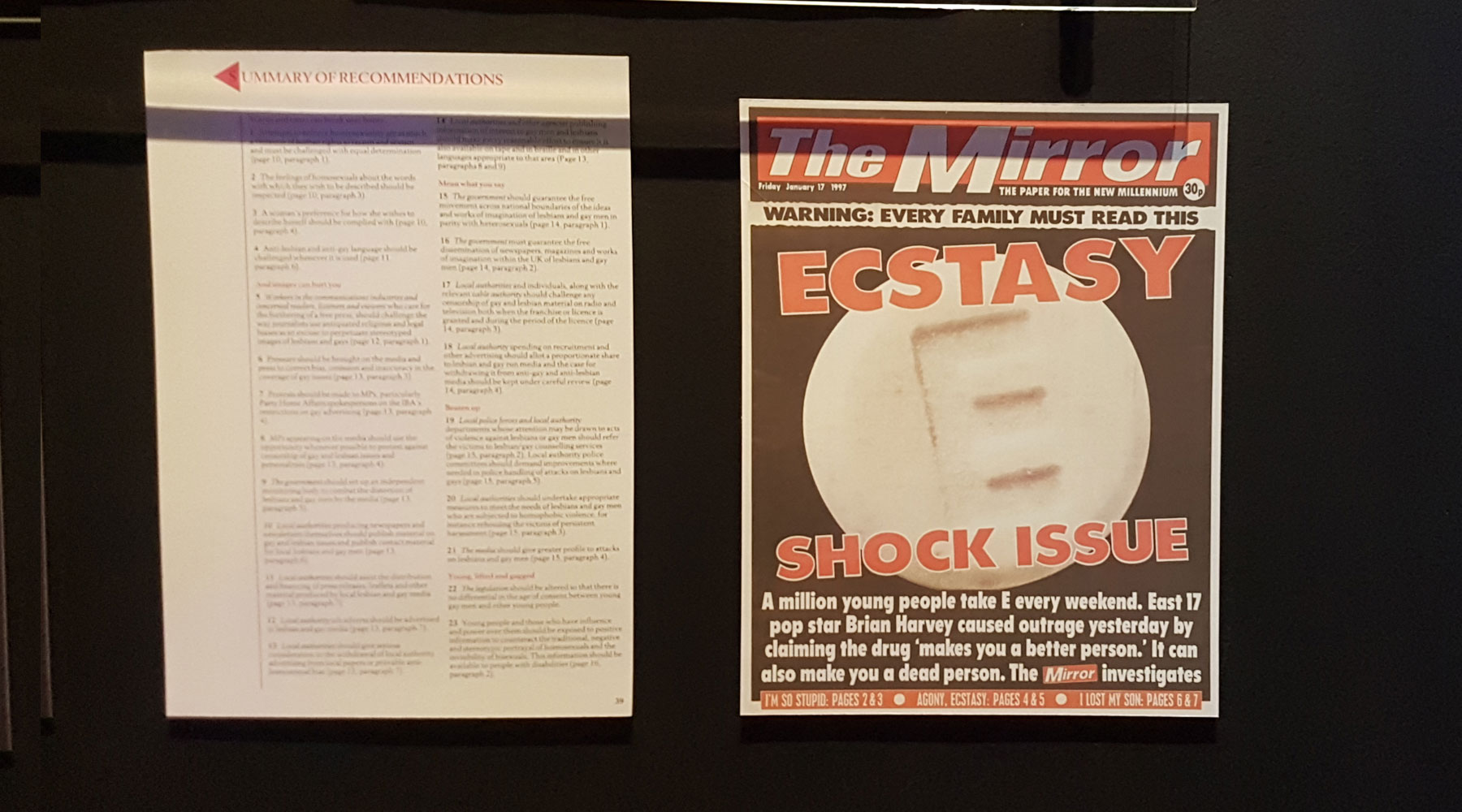It’s a sign of our strange times, that the best nightclub experience at the moment can be found in a museum in posh Kensington.
This is the Design Museum’s look at the history and culture of Electronic Music.
One of the difficulties many exhibitions face is how to convey emotion and atmosphere of the objects on show. An exhibition of Roman London will struggle to sound and smell like Roman London. It’s to their credit that the Design Museum has managed to evoke some of the atmospheres of a nightclub. No crowds in the covid season, but plenty of thumping music, and just enough strobe lighting to deliver a hint of the club night.
While nightclubs are closed, this museum may be the closest some people will get to that environment.
You’re told to bring headphones, for while there’s the background track of club music, plug headphones into suitable sockets and hear a different music.
Although headlined by the museum as Electronic: From Kraftwerk to The Chemical Brothers, electronic music and this exhibition have a timeline that goes back to before the founders of Kraftwerk were born.
Starting with the Telharmonium, a device invented in 1896, and arguably the first-ever attempt to make music from electricity, part of the exhibition is a timeline of electronic music, featuring a lot of very familiar names — including the BBC’s legendary Radiophonic Workshop through to the dance music of the 1980s and up to modern-day.
Running alongside this timeline of music are the instruments themselves from early keyboards to the most space age of silvery consoles.
Something in the region of 400 objects are on display, from the obvious keyboards and mixers, though to flyers, artwork, LPs, and even a battered old case which turned out to be a much-loved LP disc box.
If it was just music, then it’s unlikely the exhibition would be in the Design Museum, but electronic music has more than most also adopted a design aesthetic that parallels and mirrors the music.
It’s sometimes suggested that a person, or several, standing behind a keyboard isn’t that interesting a stage show — see Kraftwerk — so performers put on a performance, with big graphics, big lights, and big designs. Being a headline name in the exhibition, it’s no surprise that Kraftwerk are here, with a recording of their 3D performances – carefully sanitised 3D glasses provided.
Most of the exhibition is, therefore, more about the clubbing nights and the design aesthetic that surrounded the music creators.
Design-wise, it’s all about those flyers and leaflets luring people into a cavern of flashing lights and music. While this is a display of heritage, it’s also living memory for many people, so more personally connected than most museum displays can ever hope to be.
Just as say a visit to the Computer Museum is a feast of nostalgia about things we did in our youth, for many, the flyers and posters will evoke youthful memories.
What they can’t avoid is the controversy – drugs yes, but also the media reaction in the way the media always reacts to new things — spotting something that the curtain twitchers don’t understand, and magnifying it into a scandal that helps to sell more newspapers.
Those same curtain twitchers who were themselves the doyens of the summer of love now objecting to their children having a version on their own in the 1980s. A yellow smiling face on a riot shield being the perfect fusion of those tensions.
How the exhibition ends though is in a massive burst. Guided into a dark smoke-filled room that will smell familiar to any clubber, light and noise explodes around you, with a version of The Chemical Brothers Got To Keep On. Attempting to film it results in a video that looks like a music video, but that conveys a fraction of the experience, with a huge screen and blasts of strobe lighting.
You have stepped inside a music video.
It’s an amazing senses searing way to end an exhibition.
The exhibition, Electronic: From Kraftwerk to The Chemical Brothers is open until 14th Feb 2021 – entry ranges from £14.50 during the week to £18 at weekends.
Bring your own headphones, and be aware that there is strobe lighting throughout the exhibition.











